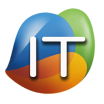In today’s digital age, schools and educational institutions rely heavily on technology to provide quality learning experiences. From secure data management to reliable internet access, the role of IT Managed Services has become essential in education. Let’s dive into how IT Managed Services are transforming education and explore how they create safer, smarter, and more efficient learning environments.
Why IT Managed Services are Essential in Education
Schools and colleges face many challenges in managing their technology. With limited budgets and staff resources, it’s often difficult to keep up with the demands of a tech-enabled educational environment. Here’s how IT Managed Services step in to help:
- Enhanced Learning Environments: IT Managed Services ensure that technology runs smoothly, allowing educators to focus on teaching rather than troubleshooting.
- Data Security: With the sensitive information held by educational institutions, IT Managed Services play a crucial role in protecting data from cyber threats.
- Network Stability: Reliable internet and network systems are essential for modern classrooms and e-learning setups.
- Budget Efficiency: Managed IT Services help institutions optimize spending by providing essential services without the need for a large in-house IT team.
Key Benefits of IT Managed Services for Schools and Universities
When a school partners with an IT Managed Service provider, they gain access to a wealth of benefits. Here’s a closer look at what Managed IT Services can offer in an educational setting:
1. Enhanced Security and Data Protection
Educational institutions store personal and academic records, financial details, and other sensitive data. Managed IT providers can:
- Install Firewalls: Protecting networks with firewalls helps keep data safe from outside threats.
- Regular Security Audits: Scheduled assessments identify vulnerabilities before they become issues.
- 24/7 Monitoring: Real-time monitoring prevents potential attacks and quickly addresses suspicious activity.
Examples of software often used in this space include Microsoft Defender for Endpoint for detecting threats and Cisco Umbrella for secure network access.
2. Reliable Technical Support
Having immediate access to tech support is invaluable for schools. Managed IT providers offer:
- Help Desk Support: Educators and staff have a direct line to experts for troubleshooting.
- Remote Assistance: Quick, remote access solutions ensure minor issues don’t disrupt learning.
- On-Site Visits: For more complex issues, IT professionals can visit the school to resolve problems in person.
3. Streamlined Device Management
Schools often provide students and teachers with laptops, tablets, or desktops. Managed IT Services help with:
- Device Maintenance: Regular software updates and maintenance keep devices running smoothly.
- Asset Tracking: Knowing where each device is located and its condition is crucial in educational environments.
- Efficient Device Allocation: Tracking devices ensures that each classroom has the resources it needs.
4. Network Management and Internet Reliability
The internet is the backbone of today’s classrooms, and Managed IT Services support schools with:
- Network Optimization: High-speed internet access allows teachers and students to make the most of online resources.
- Wi-Fi Management: Managed IT ensures reliable Wi-Fi, even when hundreds of devices are connected.
- Bandwidth Allocation: Ensures that essential services (like virtual learning) receive priority access.
5. Simplified Compliance with Regulations
Educational institutions must follow specific regulations to protect student data, such as the Family Educational Rights and Privacy Act (FERPA). IT Managed Services can assist with:
- FERPA Compliance: Ensuring data practices meet federal guidelines.
- Cybersecurity Standards: Implementing measures to align with cybersecurity best practices in education.
- Data Encryption: Encrypting sensitive data adds another layer of protection.
How IT Managed Services Improve Classroom Learning
When IT systems are dependable, educators can confidently use technology to improve the learning experience. Here’s how Managed IT contributes to a better classroom environment:
- Smooth Tech Integration: From smartboards to online quizzes, seamless tech integration makes learning interactive.
- Access to Digital Resources: Managed IT ensures reliable access to digital textbooks, learning apps, and online resources.
- Reduced Downtime: Efficient IT support minimizes downtime, keeping students engaged and lessons on track.
Examples of popular tools include Google Workspace for Education for collaborative learning and Canvas for student-teacher interaction.
The Impact of Cybersecurity on Student Privacy
Cyber threats don’t just target corporations; schools are also at risk. Managed IT Services protect educational institutions with:
- Anti-Phishing Training: Educating staff and students to recognize phishing attempts.
- Backup and Recovery: Ensuring data can be recovered quickly in case of a cyber attack.
- End-to-End Encryption: Protecting information transmitted over the network.
Cybersecurity solutions, like Sophos Intercept X and Norton Antivirus, add layers of protection to prevent breaches.
Cost Efficiency: Saving Resources with Managed IT Services
With tight budgets, many schools struggle to allocate funds for technology. Managed IT Services make it easier to stretch these budgets by:
- Preventing Costly Downtime: Quickly resolving issues helps avoid unexpected expenses.
- Reducing Staff Load: Teachers and administrative staff can focus on their primary roles instead of IT troubleshooting.
- Budget-Friendly Plans: Managed IT providers offer scalable plans that adjust to school budgets.
What to Look for in an IT Managed Service Provider
Not all Managed IT Services are the same. When choosing a provider, consider the following:
- Educational Experience: Choose a provider with experience working with schools.
- 24/7 Support: IT issues can happen anytime; round-the-clock support ensures help is always available.
- Scalable Solutions: A good provider will grow with your institution’s needs, offering flexible plans as you expand.
Steps to Integrate IT Managed Services in Education
When implementing Managed IT Services, follow these simple steps:
- Assess Current Needs: Determine which IT areas need the most support.
- Choose the Right Provider: Select a provider experienced with educational institutions.
- Outline Service Goals: Make a list of goals you want to achieve, like reducing downtime or enhancing security.
- Communicate with Staff: Inform teachers and administrators about the benefits of Managed IT Services.
- Evaluate Regularly: Schedule periodic assessments to make sure the services are meeting your institution’s needs.
Future Trends: How IT Managed Services Will Evolve in Education
The role of IT in education continues to grow. Here are a few trends that Managed IT Services can help support:
- AI in Learning: Artificial intelligence can personalize learning and simplify grading.
- VR Classrooms: Virtual reality will enable immersive learning experiences in fields like science and history.
- Cloud-Based Learning: Cloud technology will make learning accessible anywhere, anytime.
In conclusion, IT Managed Services have the power to transform educational environments, ensuring a secure, efficient, and enhanced learning experience. From improving security to keeping devices updated, Managed IT providers handle the technical needs so that teachers and students can focus on learning.
To learn more about how trueITpros can help your company with IT Managed Services, contact us.




